Taxonomy
Taxonomy is the science of classifying and naming living organisms. It is an important field of study as it helps scientists organize and understand the diversity of life on Earth.
Classification Levels
The classification of living organisms involves several levels, which are organized from broad to specific:
- Domain: The highest level of classification, which categorizes organisms into three domains: Archaea, Bacteria, and Eukarya.
- Kingdom: The next level of classification, which further divides organisms based on their characteristics and evolutionary relationships.
- Phylum: This level groups together organisms that share common characteristics.
- Class: Organisms within a phylum are further divided into classes based on additional similarities.
- Order: Within a class, organisms are grouped into orders based on similar characteristics and evolutionary history.
- Family: The next level of classification, which further categorizes organisms based on similarities in structure and genetics.
- Genus: This level groups together species that are closely related and share a common ancestor.
- Species: The most specific level of classification, which identifies individual organisms based on their unique characteristics.
Binomial Nomenclature
Each species is given a two-part scientific name according to the system of binomial nomenclature developed by Carl Linnaeus. The first part of the name represents the genus, while the second part represents the species. For example, humans are classified as Homo sapiens, where "Homo" is the genus and "sapiens" is the species.
Study Guide
To study taxonomy effectively, consider the following tips:
- Understand the levels of classification and the characteristics that distinguish each level.
- Learn about the three domains of life and their defining features.
- Practice writing scientific names using binomial nomenclature for various organisms.
- Explore the evolutionary relationships between different species and how they are reflected in their classification.
- Use mnemonic devices or visual aids to help remember the order of classification levels.
By mastering the principles of taxonomy, you will gain a deeper understanding of the incredible diversity of life and the relationships between different organisms.
[Taxonomy] Related Worksheets and Study Guides:
.◂Science Worksheets and Study Guides First Grade. Food Chains

 Activity Lesson
Activity Lesson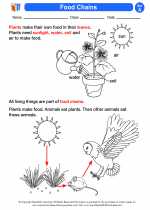
 Worksheet/Answer key
Worksheet/Answer key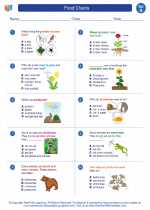
 Worksheet/Answer key
Worksheet/Answer key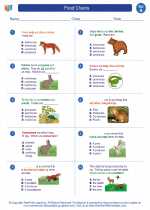
 Worksheet/Answer key
Worksheet/Answer key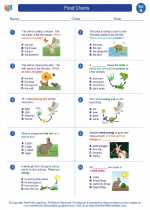
 Worksheet/Answer key
Worksheet/Answer key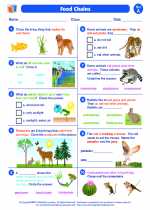
 Vocabulary/Answer key
Vocabulary/Answer key
 Vocabulary/Answer key
Vocabulary/Answer key
